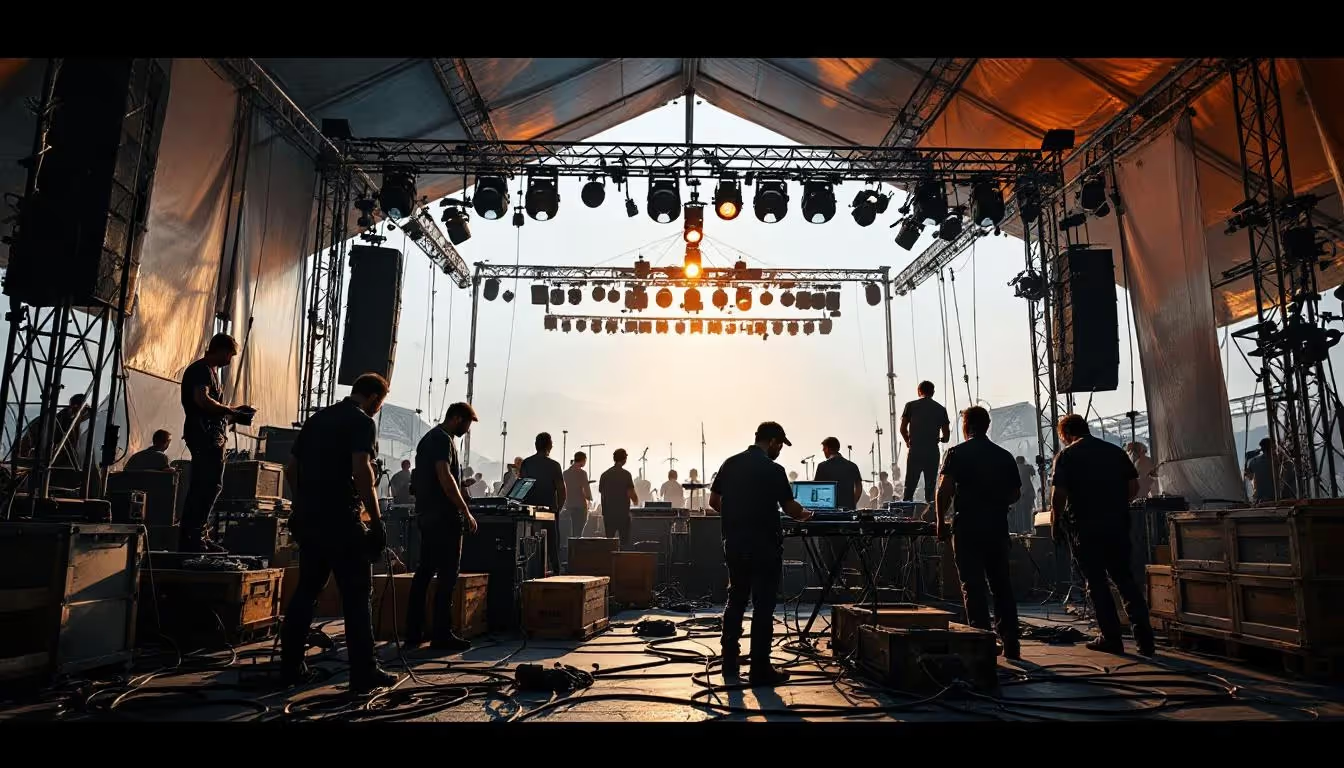Does your showroom simply display products, or does it actually create a memorable customer experience?
This article explains how to transform your space into an immersive showroom that captivates visitors and boosts sales.
We reveal the keys to experiential design, current retail innovations and strategies for a seamless customer journey, from physical to digital.
You'll discover how to redefine your customer relationships and get your brand off the ground by exceeding expectations.
From showroom to customer experience
From point of sale to immersive space
Originally, showrooms functioned as simple points of sale. Today, these spaces are being reinvented as immersive places capable of arousing visitors' interest with innovative products or novel concepts.
Retailers have radically redesigned their stores to incorporate technologies such as virtual reality. This evolution enables companies to offer enriched customer experiences, with 3D models that can be consulted on site.
Take Samsung 837, for example: this "experiential hub" skilfully combines entertainment and commerce. Modern digital tools - interactive kiosks, mobile applications - now optimize the management of in-store interactions.
A real solution for harmonizing physical and digital retail, where customers have instant access to useful information. According to industry figures, online sales have doubled in the last five years.
The pillars of a successful customer experience
The exploitation of customer data coupled with AI now personalizes live paths, adapting to the profile of each visitor.
To create a memorable showroom, several key components structure the space:
- Sensorial design: Design that stimulates the five senses has a positive influence on the perception of products and encourages purchase. Retailers are well aware of this, and are working on the lighting and sound ambience of their stores.
- Immersive technology: augmented reality and virtual window displays redefine product testing. These connected solutions combine retail innovation and interactivity.
- Advanced personalization: thanks to artificial intelligence, companies can adjust their communications according to in-store behavior. A real plus for meeting specific expectations.
- Spatial storytelling: each scenographic element reflects the brand's identity. This theatrical approach transforms the customer journey into a tangible narrative.
- Surprise and wonder: The "wow" effect is achieved through unexpected, eye-catching installations. A strategy that pays off for 68% of retailers, according to a recent study.
By mastering these levers, the showroom becomes an effective merchandising tool that reinforces customer engagement while boosting sales.
Physical vs. digital retail: a strategic fit
The link between digital and physical channels is the key to optimizing the omnichannel experience.
Click & collect, order terminals, mobile payment... These solutions illustrate the merging of channels. Successful companies use unified platforms to simultaneously manage their online store and their physical store. This synergy combines human contact with the power of digital. The result? Items available in real time, optimized inventory management and satisfied customers.
Mobile-to-store, in particular, is proving to be a formidable strategy for attracting consumers to the store. Proof of this craze: 63% of purchases initiated online are now accompanied by an in-store visit*.
*Source: Observatoire du retail 2023
Design and technology at the service of emotion
Sensorial architecture and the customer journey
The optimized layout subtly guides customers' emotions, structuring a fluid path through the store.
This approach goes beyond simple spatial layout - it makes judicious use of verticality through event rigging to stage the space.
Materials, lighting and soundscapes all contribute to creating a memorable experience. Lighting ergonomics have a direct influence on perceptions: well-designed lighting modulates mood while reflecting the brand's identity. The soundtrack, meanwhile, reinforces sensory coherence.
It's worth noting that some stores are even experimenting with room fragrances to extend the visit. These devices take into account individual sensitivities, avoiding counter-productive over-stimulation.
A clever kitchen designer could, for example, diffuse the scent of warm bread to anchor his culinary solution in visitors' minds. This sensory synergy becomes a genuine non-verbal communication lever for the company.
Digital tools for customized interaction
New technologies are redefining in-store shopping through advanced personalization:
- Connected mirrors: Instant viewing of items with automated suggestions
- Augmented reality: Enriching reality with virtual data
- Interactive kiosks: Autonomous access to product features
- Projection mapping: Dynamic scenography on the awning walls
- AI: Real-time adaptation of content according to visitor profile
- Emotional recognition: Adjusting ambience to facial reactions
- Spatialized sound: directional acoustic immersion
These solutions are transforming customer relationship management.
Let's take the example of a ready-to-wear boutique: smart mirrors enable customers to try on several outfits virtually, reducing the amount of space required in the booth. The data collected then feeds into operational merchandising.
Behavioral analysis enables continuous optimization of product layout and rotation. A specialized retailer could, for example, adapt its background music according to the number of customers measured by its sensors. These systems create a virtuous loop between customer experience and sales performance.
Ultimately, this fusion of design and technology positions the physical store as a genuine emotional gas pedal.
Companies that master this alchemy turn every visit into a loyalty-building opportunity, while optimizing their operational management.
Reinforcing brand image through experience
Spatial storytelling and visual identity
Scripting the space to embody a brand's values, creating a tangible link between design and the company's story.
This approach naturally optimizes customer relations while enhancing sales appeal.
Translating a corporate identity into physical space means materializing its DNA through architecture, materials and layout.
Take the example of a boutique dedicated to well-being: the use of natural wood, a soothing color palette and relaxation zones give concrete expression to its positioning.
Every detail becomes a vector of coherence for the articles presented, offering visitors total immersion in the brand's universe.
Creating emotional bonds and loyalty
Brand loyalty is nurtured through memorable interactions. In-store workshops and exclusive events are a proven way of stimulating purchases while consolidating loyalty.
To make a lasting impression on customers' minds, merchandising professionals rely on a number of levers. Sensory surprise - such as innovative virtual staging - is often more effective than a simple static presentation.
For example, a car retailer could transform its showroom into an immersive journey, allowing customers to virtually test-drive vehicles in a variety of settings. Interactivity remains a key element: when the customer actively participates in the in-store experience, his emotional involvement and memory are increased tenfold.
This type of solution responds to new consumer expectations while reinforcing product communication.
Ultimately, the art of commercial scripting enables companies to transcend the simple transaction.
Stores are transformed into veritable brand ambassadors, where every visit becomes an opportunity for dialogue with customers.
A strategy which, if well executed, has a positive influence on perceived image and sales performance.
Performance measurement and optimization
KPIs and feedback
Key metrics provide a tangible assessment of experiential impact, combining quantitative and qualitative tracking to optimize thecustomer experience while strengthening customer relationships.
Integrating customer feedback into the development of retail spaces enables retailers to adjust their offer to market expectations.
To truly measure the effectiveness of a showroom, we need to go beyond sales analysis. Indicators such as the Net Promoter Score (NPS) reveal the propensity to recommend the store, while the Customer Satisfaction Score (CSAT ) evaluates concrete aspects such as product layout, quality of service and clarity of product information.
Let's take the example of a decorating boutique: its conversion rate (percentage of visitors making a purchase) is a direct indicator of the effectiveness of its space management.
Average time spent in-store is becoming a marker of engagement, as is the detailed analysis of customer reviews. Paradoxically, some retailers neglect the Customer Effort Score (CES), which measures the ease of interaction with the physical store.
The solution? Cross-reference this data with qualitative feedback.
A study has shown that companies that effectively exploit customer feedback have annual growth rates 10% higher than their competitors. Let's take the case of a ready-to-wear retailer: by repositioning its flagship items according to customer suggestions.
Optimization also requires enhanced communication between field teams and marketing departments. In this way, merchandising is continuously fine-tuned: lighting, signage, customer pathways.
Clearly, this circular approach between data and the field is redefining modern retail space management. Now it's up to stores to find the right balance between standard indicators and industry-specific metrics.
The future of the experiential showroom
Innovative trends and prospects
Generative AI is redefining personalization in real time, bringing lasting changes to customer interactions. But how?
Generative AI tools now pave the way for a variety of creative content - audio, visuals, simulations - while supporting customer service teams.
Take Showroom privé, for example: their in-house solution generated 20,000 to 25,000 retouched items. Significantly, a virtual showroom for Kenzo saved 1,200 tonnes of CO₂. Retailers adopting these technologies are strengthening their position against the competition.
At the same time, experiential design incorporates eco-responsible criteria. This hybridization of retail innovation and sustainability responds to current consumer demands, while consolidating the corporate image.
Connected stores become branded communication spaces.
Hybridizing the physical and the virtual
Extended reality breaks down geographical boundaries, offering digital immersion on a global scale. Retail VR, for example, uses Matterport digital twins to recreate photorealistic online stores.
These solutions enable companies to test merchandising scenarios before physical deployment. A valuable asset for optimizing sales areas. For their part, customers can access virtual tours that extend the useful life of physical stands.
Pioneering retailers are cleverly hybridizing face-to-face and virtual stores. This strategy creates frictionless shopping journeys where the product adapts to the context of use. The proof: 67% of retailers now consider the virtual to be an indispensable complement.
In conclusion, this hybridization offers companies a powerful lever for transforming their customer relationships. Today's technological solutions make it possible to simultaneously optimize ecological impact and consumer engagement.
Tomorrow's showroom is no longer just about displaying products. The challenge? Creating a memorable customer experience by hybridizing the digital and the physical.
Why not rethink your space as a melting pot of emotions and lasting relationships? Because every interaction shapes the future of retail.
At Chroma Technique, we understand that every event is unique. That's why we adapt our solutions to your specific needs. Ready to take the step towards event excellence?
Contact our experts for a customized quote.
Discover our tailor-made solutions and benefit from our expertise for your next event.
.avif)



